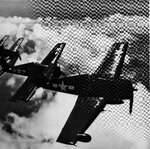Glider
Major
In combat, adrenaline tends to take care of the temperature issue, but sometimes pilots are so cold appendages refuse to function (see heated trigger-thumb gloves for Spitfire pilots).
It's the tedious hours in-between that trapped sitting in -20/-30 tends to have a larger effect.
The P-38 was unique in this issue because the temperature the pilots felt was noticeably lower than other aircraft. I'm not sure what is difficult to accept.
There was nothing unique about the P38 and heating (or lack thereof). Certainly the Me110 and the Beaufighter had similar issues but you don't hear the cold being something made such a fuss over. I have read a couple of biographies where crews have switched from the Beaufighter to the Mossie and come back soaked to the skin with sweat as they had worn the same clothes as they had in the Beaufighter.







